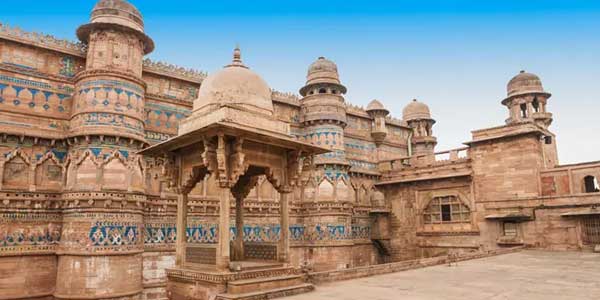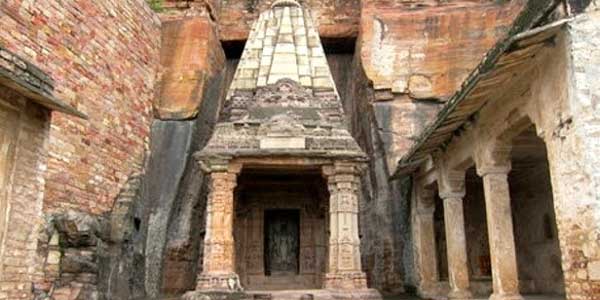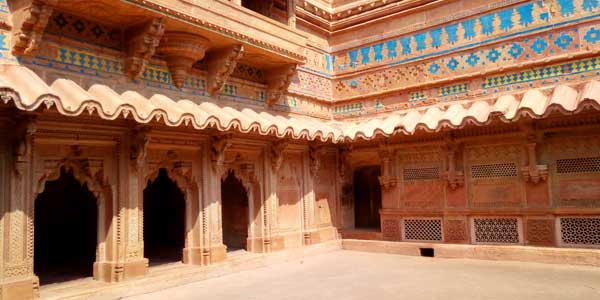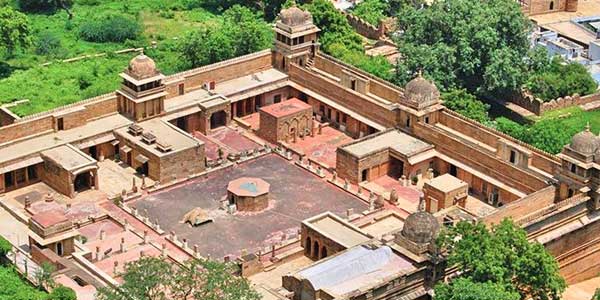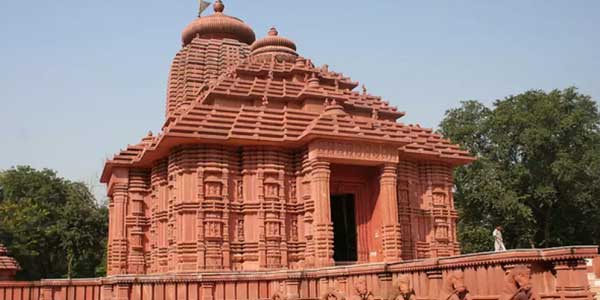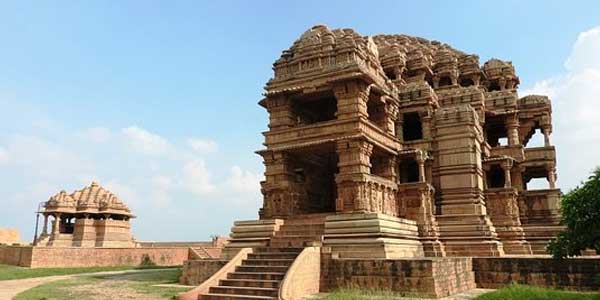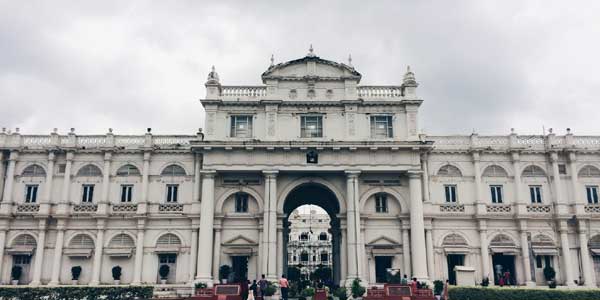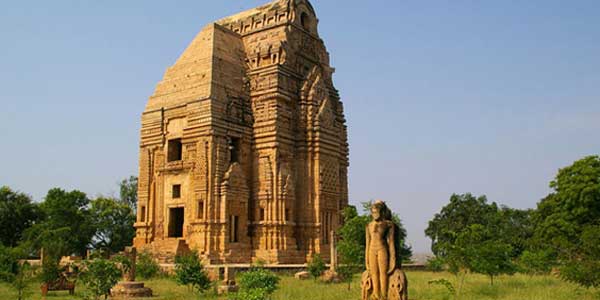
Chaturbhuj Mandir
Chaturbhuj temple, also known as the temple of the four armed Lord, stands on the eastern approach to the Gwalior Fort. Dedicated to Lord Vishnu, the temple is said to have been constructed in 876 BC. It is most famous for the world’s oldest known zero inscribed onto stone. Inside the temple, there is an idol of Lord Vishnu and the inscription with the zero. There are two figures of zero inscribed and the custodian of the temple or a tour guide can point them out. While the eastern approach to the fort is a tough climb and the cobbled path can't be traversed by car, one can also come down halfway from the top of the fort to see the temple.
It is a relative small temple with a square plan of 12 feet (3.7 m) side. The temple has a portico at its entrance supported by four carved pillars. The pillars show reliefs of individuals meditating in yoga asana position, as well as amorous couples. To the right of the portico is covered pillared mandapa, like a choultry. The doorway into the rock is flanked by goddess Ganga and Yamuna. The ceiling of the temple is a low square pyramid, similar to the Dhamnar temple. The tower (Shikhara) of the temple is North Indian Nagara style, that slowly curves with a square plan, all carved out of the monolithic rock. It has an inscription that opens with a praise for Vishnu (Vaishnavism), then Shiva (Shaivism) and nine Durgas (Shaktism), as well states that it was excavated in 876 CE (Samvat 933). Inside there is a wall relief of Varaha (Vishnu's man-boar avatar) and another of four armed Vishnu. It also a carving of goddess Lakshmi with four arms. The name of the temple may be derived from four armed Vishnu and Lakshmi.
Gwalior Monuments
Gwalior Monuments lies to the south of Agra, about 122 km. A historic town renowned for its ancient and magnificent forts and palaces, Gwalior is home to many tourist attractions worth visiting when on a tour of Madhya Pradesh to Gwalior. Gwalior's temples and museums are among the city's many tourist attractions.
Gwalior occupies an significant role in the medieval history and struggle for independence in India. The town is also renowned for being home to many of the country's respected colleges and schools. Rich in cultural heritage and architectural marvels, Gwalior was placed under the control of many dynasties of the Pratiharas, Kacchwahas and Tomars heroic Rajput clans. This city has preserved its rich cultural heritage, expressed marvelously in its palaces , temples and museums.
The Gwalior Monuments and Museums attract numerous visitors from every corner of the globe to Gwalior. Gwalior Monuments and Museums are not only buildings in stone and brick, but they are the living examples from which we can go back in time and discover India's past.
Gwalior India's Monuments in and Museums are outstanding examples of the glorious architectural heritage of the past. For decades, the remains of such buildings tended to fascinate art lovers and historians. The Monuments and Museums in Gwalior, worldwide revered for their architectural splendour, owe their execution to the imagination of great rulers of the past Those who dared to push their thoughts to the very limits of human thinking. From the pages of their history book each of these monuments narrates a distinctive tale. Gwalior museums houses a rich and varied array of ancient sculptures, artifacts, and buildings.
Built on steep sandstone ground, Gwalior Fort is the most exemplary among the Gwalior Monuments and Museums. Another famous monument inside the walls of the Fort is Gujari Mahal from the 15th century – designed as a symbol of Raja Mansingh Tomar 's love for his Gujar wife, Mrignayani. Constructed between 1486 and 1517 by Raja Mansingh, Mansingh Palace is yet another wonderful architectural splendor. The Jai Vilas Palace-current residence of the Scindia family-is also popular among the monuments and museums in Gwalior. Constructed to show a fine mix of Tuscan and Corinthian architectural styles, this palace is one of the city's main attractions.


